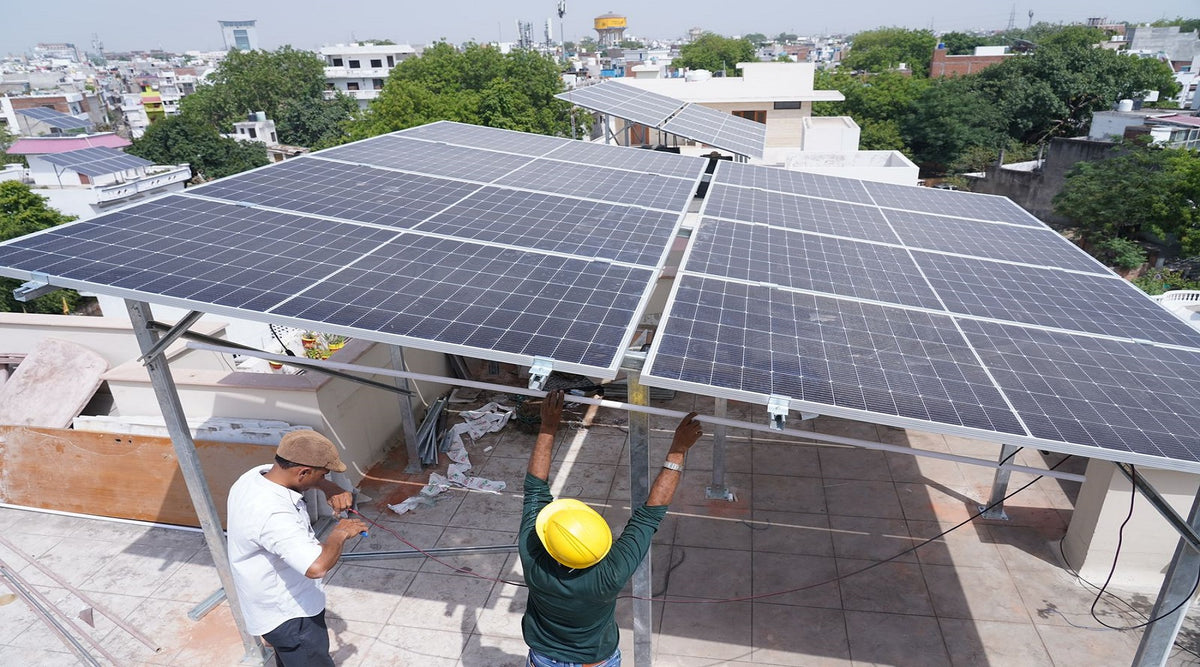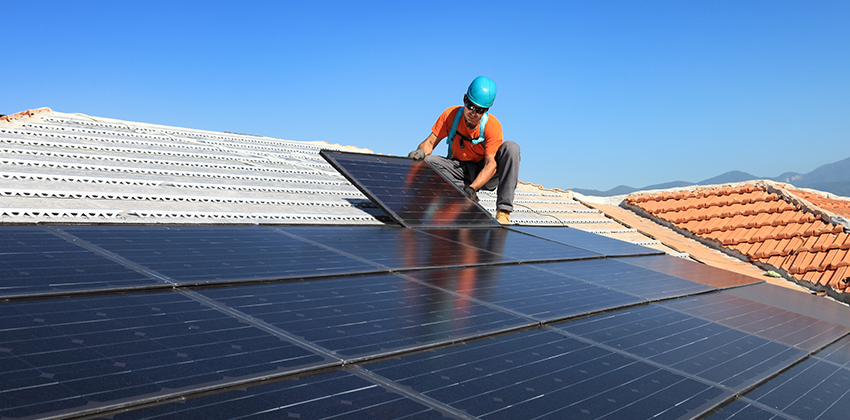Solar Energy Installation: How Solar Panel Installation Raises Property Value
Solar Installation Services: Renewable Energy Systems Harness Sunlight To Create Tidy Electricity For Residences And Companies
History and Advancement of Solar Panels
Have you ever stopped to question how a basic piece of innovation turned sunshine into electrical energy? The journey of photovoltaic panels is nothing except a modern-day legendary, woven with moments of curiosity, development, and a dash of serendipity. It was back in 1839 when Edmond Becquerel, a young French physicist, saw that certain materials produced little electric currents when exposed to light. This discovery planted the seed for what would ultimately become the photovoltaic transformation.
Early Turning Points in Solar Technology
- 1876: William Grylls Adams and his student Richard Evans Day showed that selenium might produce electrical energy from light, a precursor to modern-day solar batteries.
- 1954: Bell Laboratories unveiled the very first useful silicon solar cell, which converted sunlight to electricity at about 6% efficiency.
- 1960s: Photovoltaic panel discovered a specific niche in powering satellites, proving their worth in area exploration.
Isn't it fascinating how something developed for orbit eventually found its way to roofs worldwide? The trajectory of solar panels from experimental interests to reputable energy sources mirrors the more comprehensive dance of human resourcefulness and environmental awareness.
Key Developments That Shaped Solar Panels
| Year | Development | Effect |
|---|---|---|
| 1970s | Thin-film solar cells introduced | Minimized material costs, increased flexibility |
| 1980s | Improvements in silicon purity | Enhanced performance and life expectancy |
| 2000s | Development of multi-junction cells | Enhanced energy conversion rates substantially |
Show for a minute: how did these incremental improvements alter the landscape of renewable resource? By constantly pushing boundaries, solar innovation transformed from a niche development into an international powerhouse. The efficiency and cost of solar panels rose, firing up a wave of adoption that appeared difficult just a few years before.
Personal Insight: A Sunlit Surprise
I recall going to a little rural town where the installation of photovoltaic panels triggered an extensive change. Kids studied under intense LED lights powered entirely by the sun. It struck me-- this innovation didn't just convert photons; it transformed hope into tangible development. Isn't that the ultimate power of solar energy?
In the grand tapestry of energy history, solar panels stand out as a beacon-- a testament to human willpower and the unrelenting pursuit of cleaner, sustainable futures. From the curious experiments of 19th-century researchers to the streamlined, effective varieties we see today, the story of solar panels reminds us that often, the brightest concepts begin Solar System Installation Near Me with a basic ray of light.
Unveiling the Spectrum: Types of Photovoltaic Panel Technologies
Ever questioned why some photovoltaic panels shine like glass while others look like dark, matte tiles? The secret lies deep in their technology. From crystalline silicon to thin movies, photovoltaic panels come in an array of designs, each with its quirks and efficiencies.
Crystalline Silicon Panels: The Workhorse of Solar
Monocrystalline and polycrystalline panels control the landscape. Monocrystalline, made from a single silicon crystal, provides the highest efficiency rates-- in some cases going beyond 22%. This comes at a cost: their production procedure is energy-intensive. Polycrystalline panels, on the other hand, are made from multiple silicon fragments melted together. They sport a particular speckled blue shade and generally fall a little behind in efficiency, hovering around 15-17%. Yet, they often cost less in advance.
Envision setting up a monocrystalline range on your rooftop; the streamlined black panels take in the sun's rays like a sponge. What if your roofing system's shape or shading isn't ideal? Polycrystalline panels may manage partial shading better, a subtlety typically neglected.
Thin-Film Solar Panels: Flexibility Fulfills Innovation
Thin-film technology departs from the bulky silicon wafers and instead layers photovoltaic product on substrates like glass, plastic, or metal. Cadmium telluride (CdTe) and copper indium gallium selenide (CIGARETTES) are popular thin-film products offering lightweight and versatile options.
- Thin-film panels tend to carry out better in low-light or high-temperature environments.
- They're less effective general-- typically around 10-12%-- however their versatility can be a game-changer for non-traditional installations.
- Since they're lighter, they're in some cases chosen for roofs not able to support heavy loads.
Emerging Technologies and the Road Ahead

Perovskite solar cells, frequently hailed as the next huge leap, have actually stirred enjoyment for their prospective to reach performances comparable to silicon panels however at a portion of the expense. Their durability remains under analysis, comparable to a promising novel whose ending is still unwritten.
Have you ever faced the disappointment of your solar output dipping suddenly? In some cases, the perpetrator isn't dirt or shading however the panel's fundamental response to temperature changes. For instance, crystalline silicon panels tend to lose efficiency as temperature levels skyrocket, frequently by about 0.5% per degree Celsius above 25 ° C. Specialist Tips for Selecting the Right Innovation
- Assess your environment: Is your place prone to high heat or regular cloud cover? Thin-film panels may outshine silicon in these conditions.
- Think about installation restraints: Limited roofing system area? Monocrystalline panels pack more power per square foot.
- Evaluate long-term toughness: Silicon panels have decades of proven reliability, while new technologies like perovskite are still showing their guts.
- Consider aesthetic appeals and combination: Some homeowners value the sleek black appearance of monocrystalline panels, while others choose the less interfering thin-film choices.
| Innovation | Normal Efficiency | Strengths | Factors to consider |
|---|---|---|---|
| Monocrystalline Silicon | 20-22% | High effectiveness, sleek look | Greater production energy, cost |
| Polycrystalline Silicon | 15-17% | Lower expense, much easier manufacturing | Less efficient, blue speckled appearance |
| Thin-Film (CdTe, CIGS) | 10-12% | Lightweight, flexible, excellent in shade | Lower efficiency, much shorter lifespan |
| Perovskite (Emerging) | 15-20% (lab scale) | Possibly low cost, high effectiveness | Stability and durability issues |
Setup: The Unsung Hero of Solar Effectiveness
Imagine planting a seed in rocky soil and anticipating a productive tree. That's what photovoltaic panel installation feels like when done without precision. The angle and orientation of your panels can make or break the energy harvest. Panels angled improperly may indulge in sunlight, however they won't convert it efficiently.
South-facing roofings usually absorb the most sun in the northern hemisphere, but what about roofings that deal with east or west? Tilt modifications can compensate, but not completely. The distinction between 15 degrees and 30 degrees tilt can easily translate into a 10-15% drop in yearly output.
Pro tip: When installing, avoid shadows cast by chimneys, trees, and even neighboring structures. Just a small shadow on one cell can reduce the whole panel's output considerably. Keep in mind, solar batteries are like dominoes; if one falls, the rest follow.
Secret Setup Factors Affecting Effectiveness
- Panel Orientation: South-facing is optimum in lots of regions but consider geographical specifics.
- Tilt Angle: Change seasonally or repair at the average ideal angle for your latitude.
- Shading: Even intermittent shadows can cause disproportionate energy loss.
- Roofing Material: Reflective surfaces can increase panel temperatures, reducing efficiency.
- Ventilation: Panels perform best when air distributes beneath, preventing overheating.
Effectiveness Aspects: Beyond the Surface area
Heat is a tricky burglar. High temperature levels deteriorate photovoltaic performance. Panels rated at 25 ° C can lose 0.5% performance per degree above that. In scorching summer seasons, that theft adds up, making a shaded but cooler panel exceed a hotter, "perfectly lit" one.
Ever discovered how a freshly installed range appears to hum with promise but gradually dips in output? Dust and gunk do their part, however so does intrinsic destruction. Panels lose about 0.5% to 1% effectiveness annually, a subtle decrease that substances silently.
Advanced Tips for Making The Most Of Efficiency
- Microinverters: Usage these to make sure that shading or breakdown in one panel does not drag down the entire system.
- Bypass Diodes: They help maintain output by separating shaded or broken cells within a panel.
- Routine Monitoring: Track output daily to catch dips brought on by unanticipated factors like bird droppings or debris.
- Optimize Electrical Wiring: Thicker cable televisions decrease resistance loss, specifically in larger systems.

| Aspect | Effect on Efficiency | Expert Suggestion |
|---|---|---|
| Panel Temperature level | 0.5% efficiency loss per ° C above 25 ° C | Set up panels with airflow underneath for cooling |
| Shading | As much as 80% output reduction from partial shading | Cut surrounding foliage frequently |
| Orientation & & Tilt | 10-15% yearly output variation | Change tilt seasonally if possible |
| Electrical wiring Resistance | 2-5% energy loss in inadequately sized cable televisions | Usage properly gauged cable televisions |
Ecological Effect and Benefits of Solar Panels
Have you ever paused to consider how the sunshine captured on your roof changes into clean, sustainable energy!.?. !? Photovoltaic panel imitate quiet guardians versus the relentless march of carbon emissions, turning photons into power without a whisper of contamination. The ecological footprint of solar innovation is terribly lighter compared to fossil fuels, but it's not without its intricacies.
One frequently neglected element is the life process analysis of photovoltaic panels-- from raw product extraction to end-of-life disposal. Mining for silicon and rare metals can stir environmental ripples, yet advances in recycling innovations guarantee to close the loop more successfully than ever before. Picture a future where solar panel waste becomes the raw product for the next generation of cells-- circular and sustainable.
Secret Environmental Advantages
- Decrease in greenhouse gases: Photovoltaic panel produce zero emissions throughout operation, significantly cutting the carbon footprint of electrical power generation.
- Water conservation: Unlike standard power plants, solar panels require very little water, relieving stress on marine ecosystems.
- Air quality enhancement: By displacing coal and gas plants, solar power reduces damaging toxins that contribute to smog and breathing diseases.
- Land utilize efficiency: Combination of photovoltaic panels on roofs and city areas reduces interruption to natural environments.
Unexpected Insights
Did you know that the energy payback time for modern solar panels has diminished drastically? Early designs needed years to offset the energy bought their manufacture. Today, some panels recover cost in under 2 years, a testimony to leaps in making effectiveness. This implies the ecological "cost" is paid back quicker, leaving years of clean energy ahead.
Yet, identifying the ecological trade-offs requires a nuanced eye. For instance, the use of dangerous chemicals during production needs stringent controls-- ignored in popular stories however crucial to sustainable deployment. What if we harnessed bioplastics or organic photovoltaics to soften this impact even more? The horizon is wide open for development.
Tips for Maximizing Environmental Advantages
- Select panels with high-efficiency rankings to generate more power per square meter, decreasing product use.
- Consider the positioning and angle thoroughly-- watching and dirt build-up can silently deteriorate ecological gains by lowering output.
- Engage with certified recyclers who specialize in solar parts to ensure responsible end-of-life handling.
- Track and optimize your system's performance with clever monitoring tools to catch dips in effectiveness early.
| Ecological Aspect | Solar Panels | Coal Power Plants |
|---|---|---|
|
CO. 2Emissions. |
Near zero operational emissions | High emissions per kWh produced |
| Water Usage | Very little water use | Substantial water usage for cooling |
| Land Effect | Low, particularly on rooftops | High, often requiring mining and waste disposal |
| Waste Generation | Recyclable elements increasing | Toxic byproducts requiring disposal |